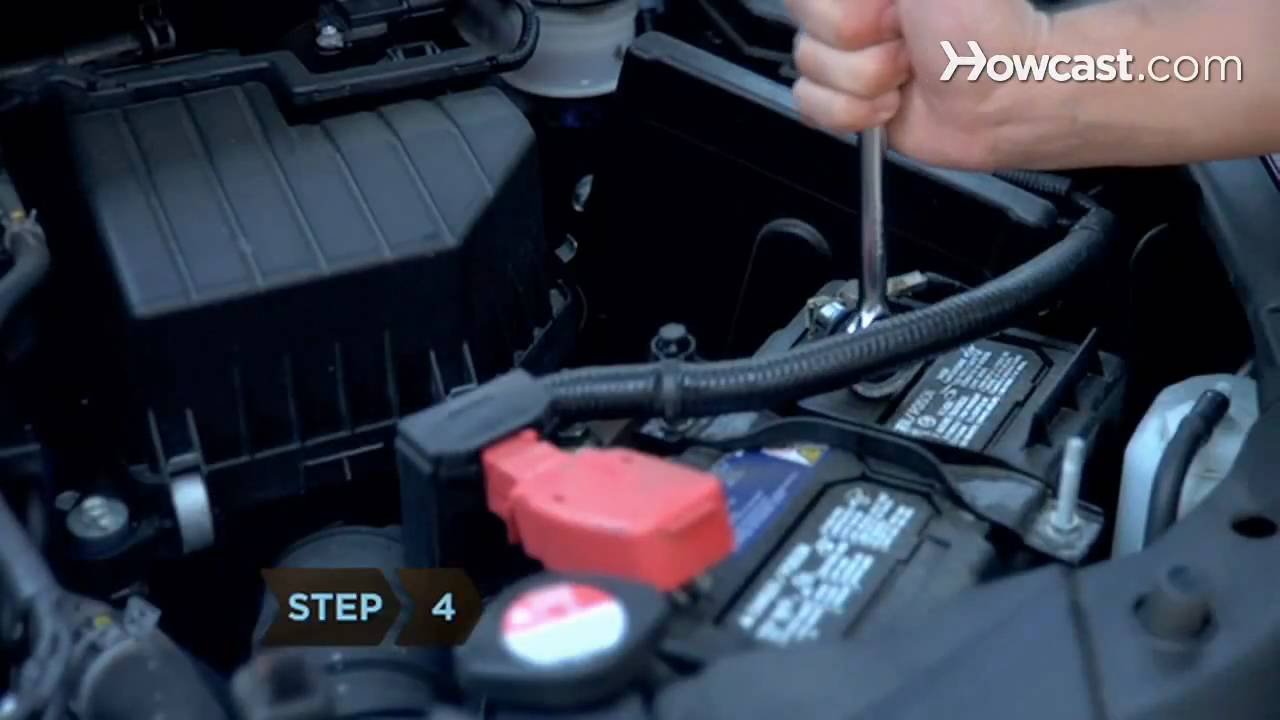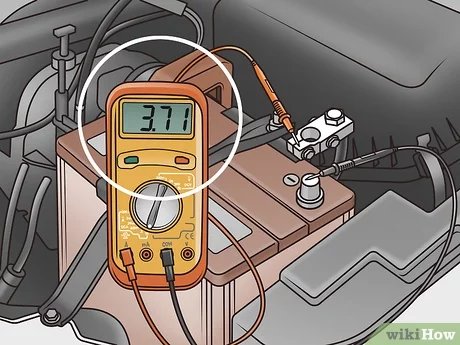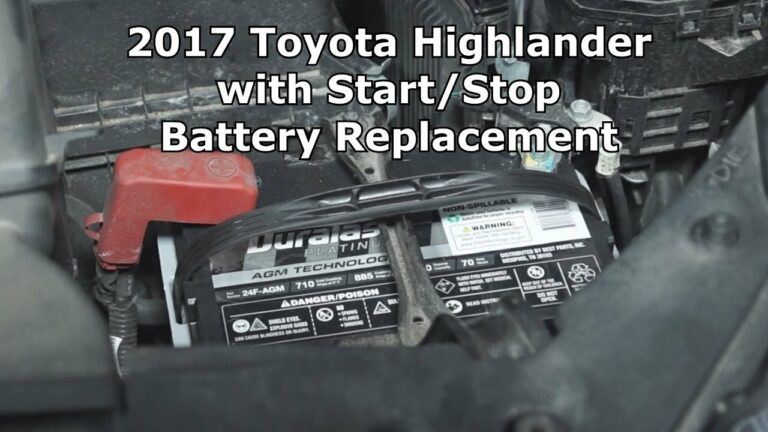Step-By-Step Guide: Disconnecting A Car Battery
Today we discuss Disconnecting A Car Battery. Disconnecting a car battery is a simple yet essential task that every car owner should know. So, how to disconnect a car battery? Well, fret not!
In this article, we will guide you through the step-by-step process of disconnecting a car battery, ensuring you stay informed and empowered when it comes to your vehicle’s maintenance. Let’s dive right in and demystify this common automotive procedure.
How to Disconnecting A Car Battery?
Disconnecting a car battery may seem like a simple task, but it’s important to do it correctly to avoid any risks or damage. Whether you need to replace the battery,
perform maintenance, or work on other electrical components, knowing how to disconnect a car battery safely is essential.
In this comprehensive guide, we’ll walk you through the step-by-step process of disconnecting a car battery, providing you with tips and precautions along the way.
Gather the Necessary Tools and Materials
Before you begin disconnecting your car battery, gather the following tools and materials:
- Protective gloves
- Protective eyewear
- Adjustable wrench or socket set
- Battery terminal cleaner or wire brush
- Baking soda and water solution (if needed)
- Battery terminal grease (optional)
Park in a Safe Area
It’s crucial to disconnect your car battery in a safe location to avoid any accidents or injuries. Follow these guidelines when choosing a suitable area:
- Make sure you’re parked on a level surface.
- Ensure the car is in park (for automatic transmission) or in first gear (for manual transmission) with the parking brake engaged.
- Never work on your car’s battery in the rain or during inclement weather.
- Preferably, disconnect the battery outdoors or in a well-ventilated area.
Identify the Battery’s Location
The battery is typically located in the engine compartment, but it can also be found in the trunk or under the rear seat in some vehicles. Refer to your car’s owner’s manual or consult online resources to locate the battery accurately.
Understand Battery Terminal Types
Car batteries have two types of terminals—positive (+) and negative (-). It’s crucial to understand the terminal types before proceeding with disconnection. Here’s what you need to know:
- The positive terminal is usually red and marked with a plus (+) sign.
- The negative terminal is typically black or marked with a minus (-) sign.
- Never mix up the terminals, as it can lead to electrical mishaps or damage.
Remove Any Obstacles
Before disconnecting the car battery, remove any obstacles or accessories that might impede your access to the battery. This could include:
- Engine covers
- Air intake tubes
- Electrical connections
Put on Protective Gear
Ensure your safety by wearing the appropriate protective gear. Here’s what you should do:
- Put on protective gloves to protect your hands from battery acid and corrosion.
- Wear protective eyewear to shield your eyes from any potential splashes or debris.
Disconnect the Negative Terminal
Follow these steps to disconnect the negative terminal:
- Identify the negative terminal (-).
- Loosen the nut or bolt securing the negative terminal cable to the battery using an adjustable wrench or socket set.
- Once loose, gently twist and pull the negative terminal cable away from the battery.
- Secure the cable away from the battery or wrap it with a non-conductive material to prevent accidental contact.
Disconnect the Positive Terminal
Follow these steps to disconnect the positive terminal:
- Identify the positive terminal (+).
- Loosen the nut or bolt securing the positive terminal cable to the battery using an adjustable wrench or socket set.
- Once loose, gently twist and pull the positive terminal cable away from the battery.
- Secure the cable away from the battery or wrap it with a non-conductive material to prevent accidental contact.
Inspect the Battery and Terminals
With the battery disconnected, take the opportunity to inspect the battery and terminals for any signs of damage or corrosion. Follow these steps:
- Check for any signs of leakage, cracks, or bulges on the battery casing. If you notice any of these issues, it’s recommended to replace the battery.
- Inspect the battery terminals for corrosion. If there is corrosion present, clean it using a battery terminal cleaner or wire brush.
- If the terminals are heavily corroded, you may need to use a baking soda and water solution to remove the corrosion. Remember to wear protective gloves and eyewear when handling corrosive substances.
- Once clean, you can apply a thin layer of battery terminal grease to prevent future corrosion.
Reconnecting the Battery
After completing your required task, it’s time to reconnect the car battery. Follow these steps:
- Ensure both the negative and positive terminals are clean and free from debris.
- Position the positive terminal cable back onto the positive terminal and tighten the nut or bolt with an adjustable wrench or socket set.
- Repeat the same process for the negative terminal cable.
- Ensure both connections are secure before moving on
How to Disconnect and Reconnect the Car Battery
Frequently Asked Questions
How do I disconnect a car battery?
To disconnect a car battery, follow these steps:
Why would I need to disconnect my car battery?
There are several reasons why you might need to disconnect your car battery, including maintenance work, replacing the battery, or performing electrical repairs on your vehicle.
What tools do I need to disconnect a car battery?
You will typically need a pair of pliers or a wrench to loosen and remove the terminal connections on the battery.
Where is the car battery located?
The location of the car battery depends on the make and model of your vehicle. It is commonly found under the hood, but in some cars, it may be located in the trunk or under the rear seat.
What precautions should I take before disconnecting the car battery?
Before disconnecting the car battery, it is important to turn off the engine, remove the keys from the ignition, and make sure all electrical components are turned off. Additionally, wearing gloves and safety glasses is recommended to protect yourself from any potential sparks or corrosive substances.
How do I disconnect the battery terminal connections?
To disconnect the battery terminal connections, use pliers or a wrench to loosen the nuts or bolts holding them in place. Start with the negative terminal (usually marked with a “-” sign), followed by the positive terminal (usually marked with a “+” sign).
Is there anything else I should be aware of when disconnecting a car battery?
When disconnecting a car battery, it’s important to avoid touching the positive and negative terminals together or allowing any metal objects to come into contact with both terminals simultaneously. This can cause sparks or a short circuit, leading to potential damage to the battery or electrical system of your vehicle.
Final Thoughts
Disconnecting a car battery is a straightforward process that requires some basic steps. First, find the battery and identify the positive and negative terminals. Next, use a wrench or socket to loosen the nut on the negative terminal and remove the cable. Repeat the same process for the positive terminal. Remember to wear safety gloves and goggles to protect yourself from any potential sparks or accidents. By following these steps, you can safely disconnect your car battery without any hassle. So, now you know how to disconnect a car battery.




